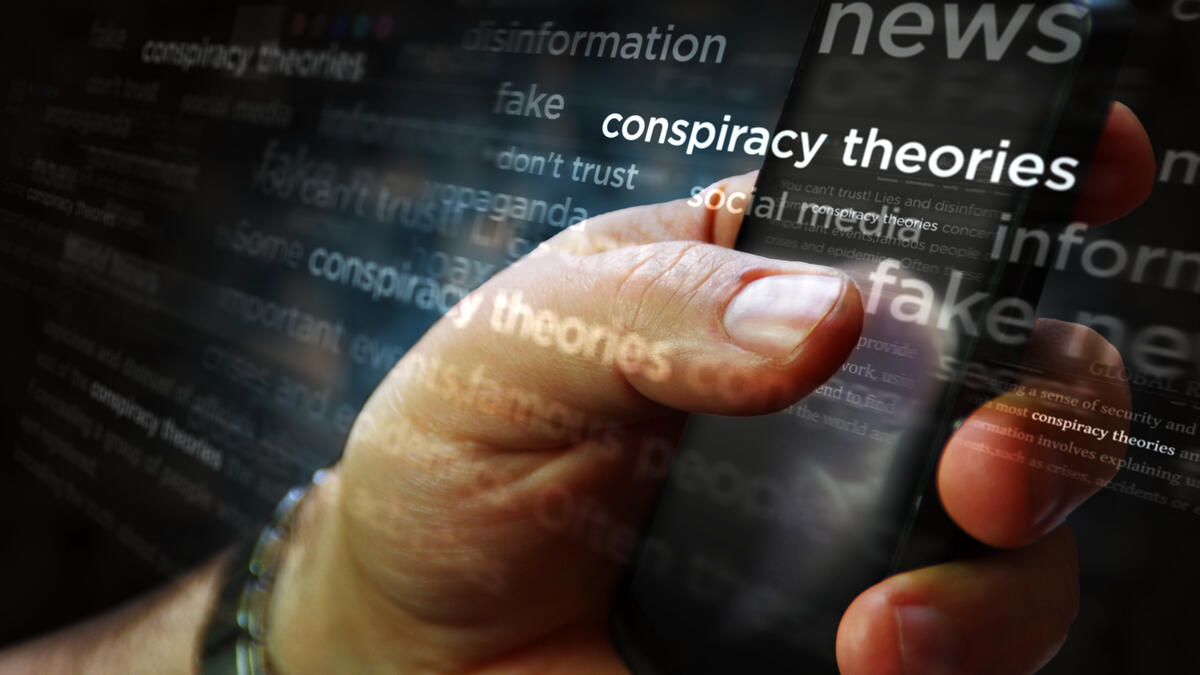The truth behind believing lies: ASU professors explain what may be behind irrational beliefs

Photo courtesy iStock/Getty Images
With the 2024 election looming in the not-so-distant future, there’s a lot of information to consider and consume. And that may mean a lot of lies that can lead to irrational beliefs.
Laying aside questions of polls and popularity, a new paper titled “Rational Reasons for Irrational Beliefs” explains what may be behind people's unfounded beliefs, and provides different perspectives and interventions that can help reduce polarization in the U.S.
“Why do people believe in conspiracies? Is it because they are not intelligent or gullible?” said co-author Steven Neuberg, an Arizona State University Foundation Professor in the Department of Psychology. “Sometimes, but not always. Many beliefs — many falsehoods — can also serve a strategic and practical social function for people.”
Michael Barlev, lead researcher on the article, said, “What we are trying to do with this paper is a complete paradigm shift in how people think about these things.”
Barlev, an assistant research professor in the Department of Psychology, spoke to ASU News about his take on irrational views and interventions that could combat problematic beliefs.
Editor's note: Answers have been lightly edited for length and/or clarity.
Question: What made you and your colleague decide to write this paper?
Answer: There is a lot of interest in why people believe all sorts of irrational things. A common explanation is that people are just gullible or unintelligent or even mentally ill.
And so that predicts that rational, smart people would not believe falsehoods, right?
But what was really striking for me — what really got me thinking — was that when I looked around at the academic world, I thought, “Hold on, academics are supposed to be among the most rational thinkers out there. And even we believe a lot of things that are false.”
And it’s not a lack of analytical thinking or intelligence. These are the best analytic thinkers — some of the smartest people in the world of academia. And they believe falsehoods too.
It was that realization that motivated me to start thinking about this issue more deeply.
Q: What did you come up with?
A: We looked at beliefs and took a social perspective of them. We said, here's a possibility.
It might be that these beliefs aren't bugs in our psychological systems — they aren't errors of reasoning.
It might be that many irrational beliefs are in fact, design features. It could be that many of these falsehoods serve strategic and social functions for people. They're there because they do something important for us.
And what might those important things be? In the paper, we play with four possibilities.
Q: What are they?
A: One possibility is that believing in falsehoods allows people to disparage others that they don't like. For example, why do so many people still believe President Barack Obama was born in Kenya?
Is it because they are gullible? Is it an error in the system? Maybe to some extent, for some people, but we are misunderstanding what's happening here.
So many people believe Obama was born in Kenya because that is a way for them to mock or ridicule the Democrats. Hillary Clinton did a similar thing when she made the irrational statement that the Republicans were “a basket of deplorables” in her 2016 speech.
Democrats and Republicans are rivals. Both groups look for ammunition to attack the other every opportunity they have. Regardless of whether the beliefs they have about each other are real or imagined.
So it's not a failure of rationality, it's not a delusion. It's a strategic way of disparaging an individual or group.
Q: Another social possibility is allegiance to an organization. How does that work?
A: We think a lot of false beliefs may serve to signal group commitment. And so again, they're designed for that function. They're not mistakes in reasoning.
During my career, I've also worked with people who were in cults. And there's an interesting phenomenon that I've noticed. When someone is in a cult, they believe a lot of things that are very weird. It’s as if they are holding these beliefs because they're serving a practical function. That's how people show they are a committed group member.
But the moment they leave the cult, all those beliefs are dropped almost immediately because for the first time, they can examine them using their analytic rational thinking capacities. It's almost as if those beliefs are shielded from examination beforehand — while they're serving those functions for them.
Q: How can your theories be helpful?
A: There's been so much interest in fake news and misinformation over the past decade. It’s really exploded. And we're saying, here's another way of thinking about this question, which no one has thought about, and we think it’s really productive.
It's like we're planting a flag. We want to shout to everyone: "Here's this brand new way of thinking about things!" And we think it's extraordinarily helpful. Because it suggests completely different interventions for combating problematic beliefs.
Q. What would those interventions look like?
A: Fake news and misinformation are driving a deep wedge between Democrats and Republicans. One possible intervention is based on what social psychologists call intergroup relations.
Here’s one example of how that would work. Twitter has a sidebar with trending news. Imagine if it was used to post news like, “Democrats and Republicans working together on a bipartisan initiative.” Or “Black and white neighbors coming together to clean up their community.”
To the extent that interventions like these make people view one another as part of the same group, then maybe, in some small way, they will be eroding these societal rifts. Decreased polarization predicts that fake news and misinformation on that platform will go down too.
There is a small hope that this paper ends up being useful to other researchers ... and that some of this is ultimately useful for solving this problem.
But there's one basic question: To what extent do social media platforms want to reduce the fake news and misinformation circulating on them? Because fake news and misinformation make people feel angry and engage with the content. They like it, they retweet it, they comment on it.
If any of these platforms are really serious about this (reducing fake news and misinformation), then they should be trying things like this, because what they're doing right now is not working.
More Local, national and global affairs

Watts College launches program to fill jobs created by pending public service retirements
Within the next decade, a “silver tsunami” of employees will retire from public service, according to Arizona State University School of Public Affairs Director Shannon Portillo.The huge…

How ASU research is helping first responders
Arizona State University’s faculty members are studying how to improve the jobs, health and well-being of first responders, and also applying their research through direct training to help these…
ASU honors Sun Devils, local organizations with Social Work Month Awards
Arizona State University’s School of Social Work recently honored a total of 29 students, faculty, staff, alumni and local community organizations with its annual Social Work Month Awards.The…


